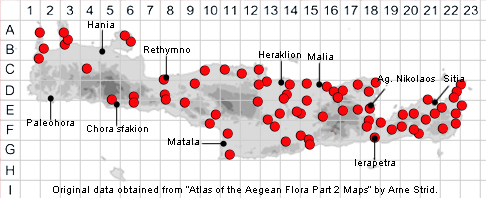SPECIES DESCRIPTION
EUPHORBIA DIMORPHOCAULON
Family and Genus:- See- EUPHORBIACEAE/Subgen. ESULA/Sect.
Common Names:- None
Homotypic Synonyms:- Tithymalus dimorphocaulon.
Meaning:- Euphorbia (L) For Euphorbus, physician to the King of Mauritania.
Dimorphocaulon (L) Double stalked.
General description:- Decumbent to erect, pubescent perennial with a
subterranean, napiform tuber 2-7 cm.
Stems:-
1) 5-20 cm, slender, scaly at base, with 0-1(-3) axillary rays.
Leaves:-
1) Linear-lanceolate to oblong or obovate cuneate, obtuse to subacute, serrulate.
2) Ray-leaves, like the cauline.
3) Raylet-leaves, suborbicular, cuneate.
Flowers:-
1) Umbel, with 3-5 rays.
Fruit:-
1) Capsule, c. 3 mm, with short, conical tubercles.
2) Seeds, c. 2 mm, smooth, dull, dark brown.
Key features:-
1) Inflorescence, always of several cyathia.
2) Plant with a large, subterranean, napiform tuber.
3) Stems, erect usually less than 20 cm.
4) Capsule, with elongated or hemispherical tubercles; seeds smooth or nearly so.
Habitat:- Open dry shrubby vegetation, open coniferous woodland, occasionally in
coastal habitats. 0-600 (-1100) m.
Distribution:- Endemic Crete, S. Turkey & Cyprus. Widespread and common on
Crete.
Flowering time:- Sept-Nov.
Photo by:- Steve Lenton
